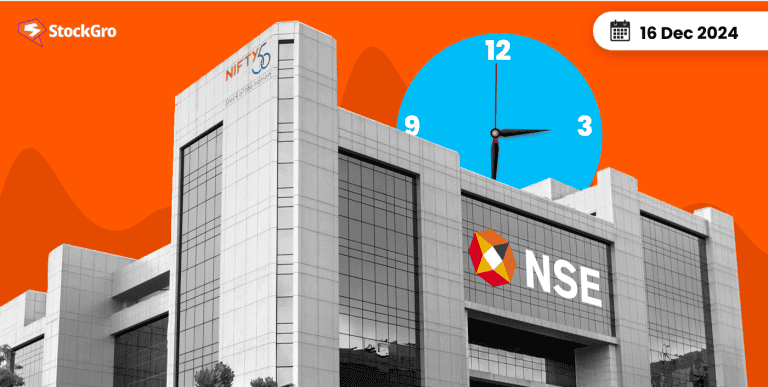
On December 17, 2024, the Indian stock market witnessed a sharp selloff for the second straight session, leaving investors puzzled. Both Sensex today and Nifty 50 today dropped over 1%, triggered by global uncertainties and domestic challenges. The selloff was led by heavyweight stocks like Reliance Industries, Infosys, and HDFC Bank, while midcap and smallcap indices managed to limit their losses.
Let’s break down what caused this crash and how major factors like the US Fed meeting, India’s trade deficit, and China’s slowdown played a role.
Also read: Sensex, Nifty 50 Fall Over 1%: Market Decline Explained
How much did Sensex and Nifty fall?
The numbers tell the story:
- Sensex today dropped 1,015 points or 1.2%, hitting an intra-day low of 80,732.93.
- Nifty 50 today slipped 302 points to touch 24,366.4.
Despite the broader decline, the Nifty Midcap and Nifty Smallcap indices fell just 0.2%, signalling relative resilience in smaller stocks.
| Index | Change (%) | Level |
| Sensex | -1.20% | 80,732.93 |
| Nifty 50 | -1.20% | 24,366.40 |
| Nifty Midcap | -0.20% | Stable |
| Nifty Smallcap | -0.20% | Stable |
Why did the markets crash?
1. Caution ahead of the US Fed meeting
Investors worldwide are waiting for the US Federal Reserve’s policy meeting scheduled on December 18, 2024. While a 25 basis points rate cut is almost certain, the market’s focus is on the Fed’s outlook for 2025.
- Any deviation from the expected dovish stance could trigger more volatility in global markets.
- The US Services PMI coming in strong at 58.5% signals a resilient US economy, reducing hopes for aggressive rate cuts.
2. Widening trade deficit in India
India’s merchandise trade deficit surged to a record $37.8 billion in November, up from $27.1 billion in October.
- A weak rupee, nearing ₹85 per dollar, puts pressure on importers while benefitting exporters like IT and pharma companies.
- This dynamic impacted stock prices in sectors dependent on imports, such as oil and gas and auto.
3. Weak performance of index heavyweights
Heavyweight stocks dragged both Sensex and Nifty down significantly:
- Reliance Industries
- HDFC Bank
- Infosys
- ICICI Bank
- Bharti Airtel
Interestingly, while broader indices fell, a handful of stocks managed to shine:
4. China’s economic slowdown
China’s economic data added to the market jitters:
- Retail sales grew by just 3% in November, down from 4.8% in October.
- Sluggish industrial output raised concerns about global commodity demand, impacting sectors like metals and energy in India.
The “Sell India, Buy China” sentiment further contributed to selling pressure, although analysts believe this could be temporary speculation.
5. Rising dollar and global market trends
The US Dollar Index stayed strong at 106.77, reducing the appeal of emerging markets like India for foreign investors. This, coupled with weak cues from Asian and European markets, led to further declines.
Also read: Comparing Nifty Total Market Index and Nifty 50
| Region | Performance |
| Asia-Pacific | -0.30% |
| Japan Nikkei | -0.15% |
| European Futures | Flat to negative |
Sectoral performance: Winners and losers
| Sector | Change (%) |
| Nifty Bank | -1.00% |
| Nifty Oil & Gas | -1.00% |
| Nifty IT | -0.50% |
| Nifty Metal | -0.60% |
| Nifty Realty | 1.00% |
| Nifty Media | 1.00% |
You may also like: Get to Know Nifty 50: Calculation and Top 10 Stocks
Key stock performances:
- Top Gainers: Adani Ports, Cipla, Tata Motors, Apollo Hospitals.
- Top Losers: Shriram Finance, Grasim, Bharti Airtel, Hindalco, L&T.
Technical outlook: Is a bounceback coming?
Despite today’s fall, experts suggest Nifty 50 has strong support around 24,300.
- A reversal could push Nifty to 24,700 and beyond.
- For Sensex, the significant support lies at 80,000, with resistance at 83,000.
Analysts remain cautiously optimistic, anticipating a short-term rebound if global cues stabilise.
you may also read: Nifty BeES: ETF with Returns of Top 50 Stocks
What should investors watch next?
1. US Fed policy outcome
The Fed’s commentary on rate cuts will set the tone for global markets in the short term.
2. Domestic economic triggers
Key data points like inflation, industrial production, and corporate earnings will influence sentiment going forward.
3. Defensive sectors
Sectors like IT, pharma, and real estate could outperform as investors seek safety amid global uncertainty.
Bottomline
The sharp fall in Sensex today and Nifty 50 today stems from a mix of global and domestic concerns – the US Fed meeting, India’s trade deficit, and China’s slowdown. While heavyweight stocks dragged indices down, broader markets showed stability, indicating cautious optimism.
For investors, this phase might present opportunities in defensive sectors as markets consolidate. Keep an eye on global cues, and remember – volatility often creates the best long-term investment opportunities.

